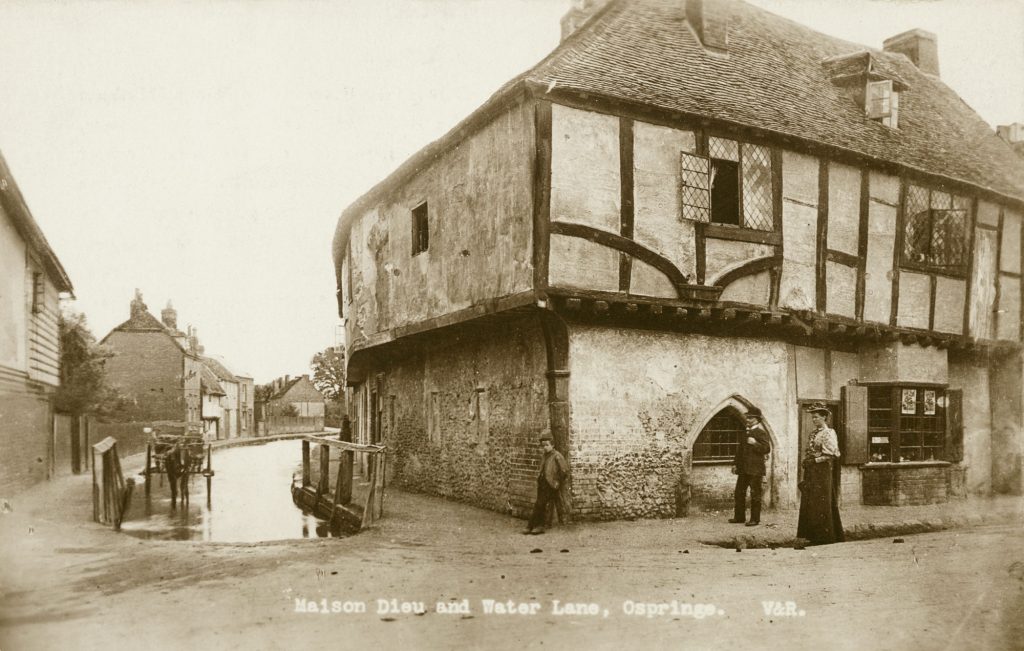Burial – and the fear of leprosy
As well as housing permanent residents, medieval hospitals gave short term accommodation to pilgrims – some of whom may have been seeking physical or spiritual cure. When they fell mortally ill, the hospitals showed compassion – but the fear of leprosy is still apparent, even though it was a disease that had begun to decline at the end of the medieval period.
Archbishop Stratford’s statutes ‘that the poor sick pilgrims, which shall happen to die in the hospital, shall be buried in the churchyard belonging to our church in Canterbury, in the place anciently assigned for that purpose; and that poor pilgrims falling sick in their pilgrimage (if they be not leprous) shall be provided for in the hospital.’
Later he quotes, ‘Those who die in the hospital, are to be buried in the church-yard of the Cathedral church, according to the statutes of the hospital, are to be buried on the west-side of the cloisters; as the ancient accustomed place,’. See the register A. D. 1614.
Giving names to pilgrims
It is only because of their deaths that we are able to find the names of some pilgrims in the hospital records:
The register that records burials began in 1571, so no written records before that date. However, I did manage to find some names.
26th December 1623 – Vincent Fright of St Thomas Hospital of Kingsbridge.
28th September 1626 – Angell Weston of St John’s Hospital. Looking through St John’s Admission book, this lady is mention and an Alice (I think Parker) takes her place on 12th October 1626 at St John’s.
15th January 1629 – Thomas Pamour, a brother of Eastbridge Hospital in Canterbury.
23rd February 1709 – William Bryan of Eastbridge in the cloister yard.
8th May 1714 – Mary Bryan of a Eastbridge Hospital in the cloister yard.
13th August 1721 – Ellen, the wife of Henry Smith and a sister of St John’s in the cloister yard.
I also took a look at the Commissioner’s Report but it was too hard to make any sense due to the difficult handwriting. I went back to the printed catalogue on Eastbridge to see if there is anything we have missed. There are numerous grants, leases and charters from 12th and 13th Century and then not much until after the dates we are looking at.
The awful modern perils of archive research
Unfortunately, I took other notes on my iPad and then managed to delete them, so it was a frustrating morning as well as leaving the Archives with someone else’s coat that was too small for me and I didn’t realise until a couple of hours later!!!









